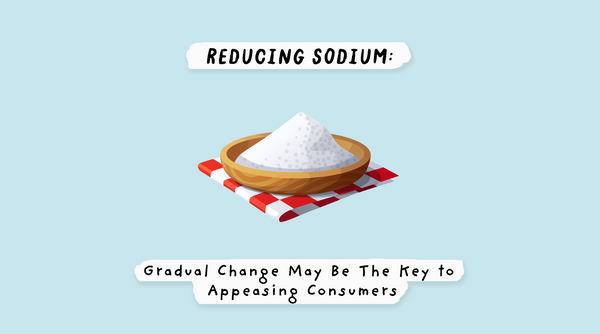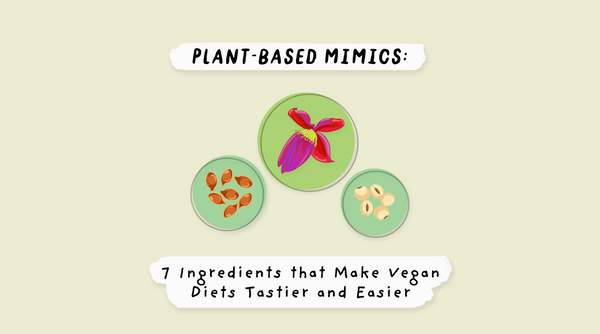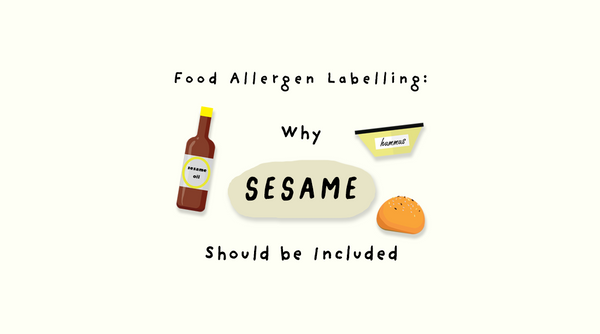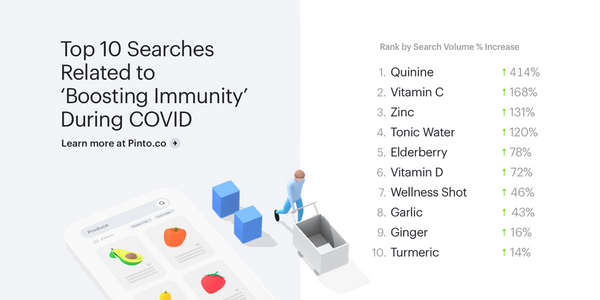A brief look
- Having too much sodium in your diet can increase blood pressure, a major risk factor for both heart disease and stroke.
- The FDA released specific guidelines for 163 categories within the packaged food industry this past October, calling for manufacturers to voluntarily reduce sodium levels in their products.
- Voluntary sodium reduction guidelines have helped to reduce sodium levels in the U.S. food supply as well as other countries, but only by a small margin.
- Manufacturers face the challenge of reducing sodium while maintaining a similar taste and texture in their products.
- Though many consumers say they want to eat healthier foods, they also want products to taste and look exactly the same, even after reformulation.
Dive deep
In October, the FDA released guidelines calling for manufacturers to voluntarily reduce sodium levels in their products over the next 2.5 years. The push to reduce sodium in our diet stems from scientific evidence indicating that too much sodium can increase blood pressure, which is a major risk factor for both heart disease and stroke.
Considering that more than 4 in 10 Americans have high blood pressure and 121.5 million American adults have cardiovascular disease—that’s almost half of the U.S. adult population—it’s no surprise that the FDA is looking to lower the average American’s sodium intake.
The most recent Dietary Guidelines for Americans suggests a recommended daily sodium intake of 2,300 mg. Currently, over 90% of adult males and 70% of adult females consume more than the recommended amount. In fact, the average daily sodium intake is around 3,400 mg, a whopping 48% above the recommended amount.
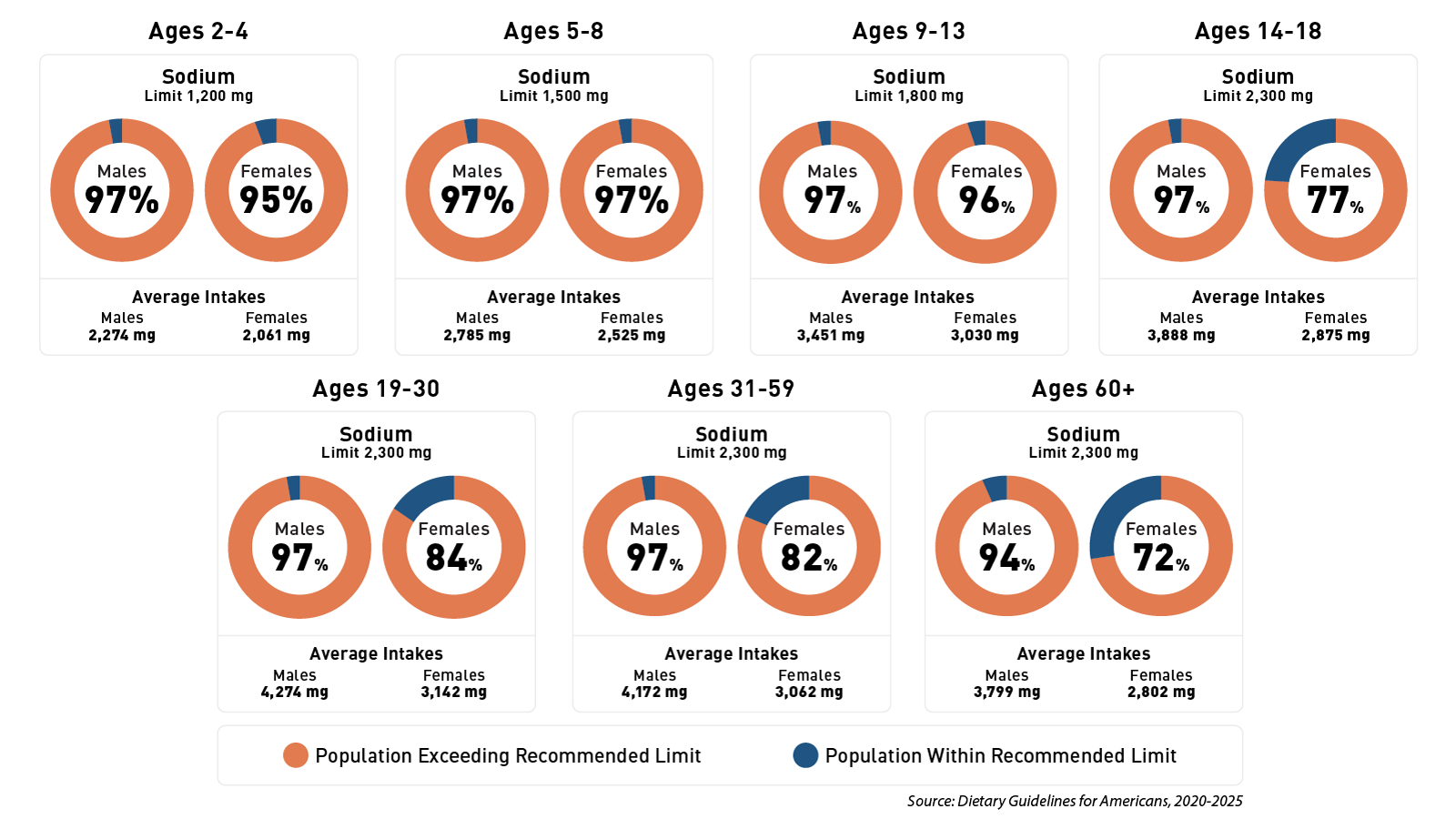
To address this issue, the FDA has decided to take a gradual approach to reducing the average daily sodium intake for Americans. The targets in the most recent guidelines are designed to decrease average daily sodium intake by about 12%—from approximately 3,400 mg to 3,000 mg. At this point, you might be a little confused. You might ask, “Isn’t 3,000 mg still above the recommended 2,300 mg of sodium?” Yes, it is. Why doesn’t the FDA recommend drastic reductions of sodium all the way down to 2,300 mg? The answer is simple. It all boils down to taste.
Sodium is added to foods for a variety of reasons such as to control microbial growth, or to improve texture, but most notably, it improves flavor. Thus, a drastic reduction in sodium may cause consumers to perceive that the food just doesn’t taste good. However, a gradual reduction can avoid this as most consumers do not notice small reductions of sodium of up to 10%. If the change is made gradually, the consumer’s taste buds will quickly become accustomed to the new sodium level.
Voluntary sodium reduction guidelines have helped in 3 countries
In the U.S., between 2009 and 2014, the National Salt Reduction Initiative had voluntary, category-specific sodium targets with the goal of reducing sodium in packaged and restaurant foods by 25% over five years. In reality, over those five years, only a 6.8% decrease in sodium levels was achieved.
In the U.K. and Canada, voluntary sodium reductions have led to incremental progress. Average sodium consumption in both countries has decreased, but not nearly as much as the guidelines intended.
A Health Canada report in 2018 showed that they have achieved an 8% decrease in average sodium intake over eight years. Meanwhile, the U.K was able to achieve a 15% decrease in sodium intake over seven years. Recent estimates show that the average sodium intake for a U.K resident is 3,352 mg while for a Canadian it is around 2,760 mg, both of which are still above the recommended 2,300 mg. However, both countries are doing better than the United States where the average sits at around 3,400 mg.
In the U.K., manufacturers within certain subsets of categories seem to be meeting targets while others are not. Public Health England released a report indicating that two categories—cereal & cereal products and meat & meat products—account for over half of an adult’s average daily salt intake. Though manufacturers in the cereal category managed to hit the average sodium target, manufacturers in the meat category did not.
While the guidelines clearly do have an impact, the government still needs to find a way to encourage more manufacturers to participate in this voluntary sodium reduction effort. It can only succeed if manufacturers across all categories take part. Some categories are missing the targets simply because their products are harder to reformulate without adversely affecting taste or texture.
Potassium chloride can help reduce sodium levels in some foods
Reducing sodium while ensuring texture and taste stay virtually the same is a major challenge. Many have turned to a salt substitute, potassium chloride, as a way to lower the amount of sodium in their product. Potassium chloride can be extracted from underground deposits and from the ocean, making it easy and cheap to acquire. Moreover, the reported average intake of dietary potassium is 1,997 mg, which is less than half of the recommended 4,700 mg or adults. This means potassium chloride can kill two birds with one stone by helping reduce sodium intake and increase potassium intake. Yet, it can never be that simple, can it?
Though potassium chloride tastes like salt and has the same functionality, adding too much can result in a bitter or metallic taste. Therefore, it can’t exactly be used as a 1:1 substitute, making reformulation efforts difficult. Manufacturers often have to use multiple strategies in addition to using potassium chloride, such as adding other savory herbs, spices, and flavors in order to maintain taste while lowering the sodium value.
Manufacturers may face backlash from reformulating their products
Companies face a tough task ahead. Reducing sodium while maintaining flavor and texture is no easy feat. For example, many consumers were not happy when General Mills switched out artificial colors for natural colors in Trix cereal. Consumers want healthier products, but they want them to taste, feel, and look exactly the same.
Manufacturers are now trying a more subtle approach, such as reformulating products without making it known to the public. Kraft, for example, reformulated its classic boxed macaroni and cheese and announced it only after selling 50 million boxes. This slightly sneaky strategy may work well in the context of sodium. After all, announcing a reformulation in advance may cause consumers to look for the differences, making them more likely to react negatively to the changes.
It remains to be seen whether we will be able to reduce sodium levels in our food supply by 12% in the next 2.5 years. As it stands, heart disease is the leading cause of death in the U.S. while stroke is the fifth leading cause of death. Considering that diets high in sodium can lead to increased blood pressure, a major risk factor for both diseases, any reduction in sodium in the average American’s diet will be welcomed. Doing so will not only save lives, which is the main goal, but it will also help reduce overall healthcare costs for both the government and individual consumers.

